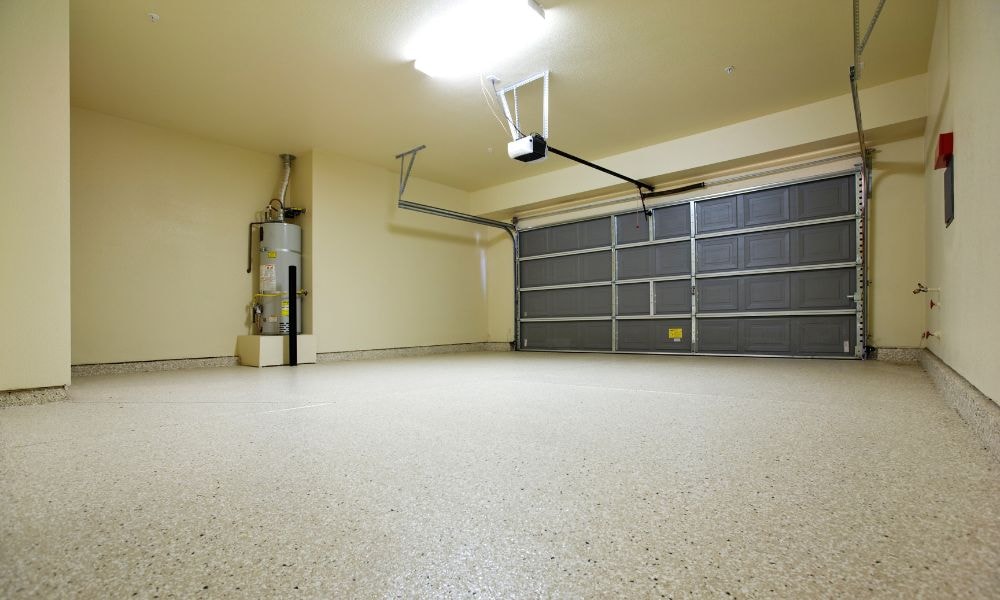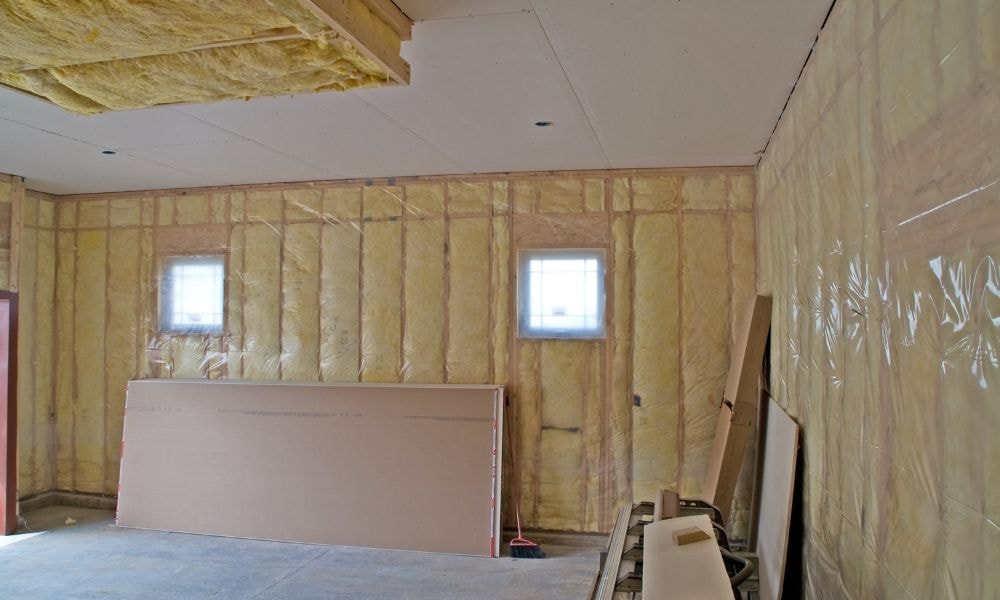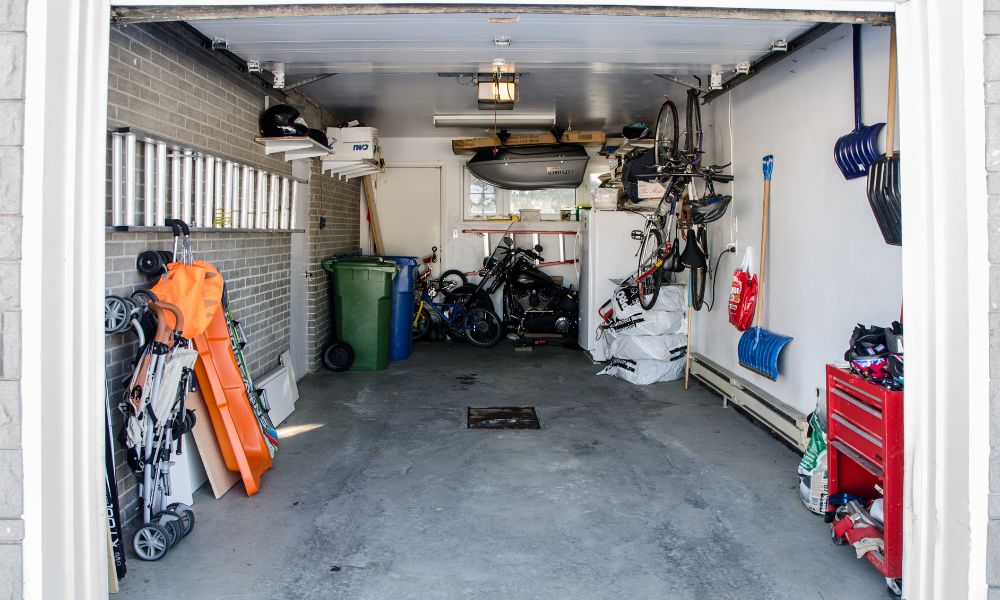Is Garage Attic Insulation Worth It? A Guide To Energy Efficiency And Cost Savings
Garage Attic Insulation Offers Energy Savings, Improved Comfort, And Enhanced Home Value. Learn The Benefits, Costs, And Best Materials For Your Garage.
- Understanding Garage Attic Insulation
- Benefits of Garage Attic Insulation
- Improved Energy Efficiency
- Enhanced Comfort in the Garage
- Potential Cost Savings on Energy Bills
- Environmental Benefits: Reduced Carbon Footprint
- Protection for Stored Items in the Garage
- Increased Home Value
- Cost Considerations
- Comparing Costs: DIY vs. Professional Installation
- Factors to Consider Before Insulating
- Types of Insulation and Their Suitability
- Fiberglass Insulation: Pros and Cons
- Spray Foam Insulation: Pros and Cons
- Cellulose Insulation: Pros and Cons
- Rigid Foam Boards: Pros and Cons
- Hybrid Approaches: Combining Different Insulation Types
- Installation Process
- Impact on Energy Bills
- Environmental Impact
- Maintenance and Longevity of Insulation
- Common Challenges and Solutions
- Comparing Garage Attic Insulation to Other Home Improvements
- Making the Right Choice for Your Home
Garage attic insulation offers energy savings, improved comfort, and enhanced home value. Learn the benefits, costs, and best materials for your garage.
If you’ve been wondering whether garage attic insulation is worth the investment, you’re not alone. Many homeowners question if adding insulation to a garage attic makes a significant impact. From reducing energy waste to improving comfort levels, attic insulation offers a variety of benefits that are often overlooked.
Insulating a garage attic can be crucial, especially if you have an attached garage that is prone to temperature swings. Without proper insulation, cold air can seep in during the winter, and hot air can accumulate in the summer, making your garage space uncomfortable and increasing your energy bills.
Insulation not only helps control the temperature but also plays a role in maintaining the structural integrity of your garage, whether it's an attached or detached garage. Understanding how insulation impacts your energy efficiency can help you decide whether this is the right upgrade for your home.
Understanding Garage Attic Insulation
Garage attic insulation is the process of installing materials like fiberglass, spray foam, cellulose, or rigid foam boards in the attic space above your garage. These materials work to create a barrier that helps to regulate the temperature by reducing heat transfer between your garage and the exterior environment. When installed properly, insulation can minimize cold air infiltration and keep hot air from escaping, making your garage more comfortable year-round.

Benefits of Garage Attic Insulation
Adding insulation to your garage attic offers a range of benefits that go beyond simple temperature control. Here are some key advantages that make this upgrade worthwhile:
Improved Energy Efficiency
Improved energy efficiency is one of the primary reasons homeowners consider garage attic insulation. By minimizing heat transfer, insulation helps maintain a consistent temperature in both the garage and the adjoining living spaces. This means your HVAC system doesn’t have to work as hard, ultimately reducing energy waste and lowering your energy costs.
Enhanced Comfort in the Garage
Enhanced comfort is another major benefit, as insulation keeps the garage more temperate, reducing the risk of hot cars or frigid temperatures making it unpleasant to use the space.
Potential Cost Savings on Energy Bills
Installing garage attic insulation can also lead to potential cost savings on energy bills over time. With better-regulated temperatures, your home uses less air conditioning or heating, translating to noticeable savings.
Environmental Benefits: Reduced Carbon Footprint
In addition to the financial benefits, there are environmental advantages to consider. By using less energy, you contribute to a reduced carbon footprint, making your home more sustainable.
Protection for Stored Items in the Garage
Insulation also protects items stored in the garage from extreme temperatures and moisture damage, extending their lifespan and maintaining their quality.
Increased Home Value
Another overlooked benefit is the potential increase in your home's value. Energy-efficient homes are attractive to buyers, and improvements like garage insulation can be a selling point. Whether you’re thinking of selling in the future or just looking to make practical home upgrades, insulating your garage attic could make a big difference.
@superior.attic COOL” Man Cave coming right up! #heatingandcooling #sprayfoaminsulation #sprayfoam #cooling #mancavegarage ♬ Write This Down (Instrumental) - SoulChef
Cost Considerations
When evaluating whether garage ceiling attic insulation is worth it, it's essential to consider the initial investment required for materials and installation. The costs can vary widely depending on the type of insulation you choose and whether you opt for a DIY approach or hire a professional.
Fiberglass and cellulose tend to be more affordable options, while spray foam insulation generally costs more due to its higher efficiency and superior air-sealing properties. Additionally, factors such as the square footage of the garage and the complexity of the insulation project can impact the overall price.
However, the long-term savings associated with reduced energy bills can often offset these upfront costs. Properly installed insulation can cut energy waste, leading to noticeable reductions in monthly energy bills. The return on investment (ROI) for garage attic insulation varies depending on the climate, the size of the garage, and the type of insulation used, but many homeowners find that they recoup their costs within a few years.
Comparing Costs: DIY vs. Professional Installation
Deciding between a DIY approach and hiring a professional for your garage ceiling insulation project involves weighing both the costs and the potential benefits. DIY insulation can save money on labor, but it also requires time, effort, and some level of expertise to ensure that the job is done correctly. Mistakes in insulation installation, such as inadequate air sealing or using the wrong type of insulation, can reduce its effectiveness, resulting in poor temperature control and higher energy bills.
On the other hand, professional installation typically comes with a higher price tag but offers peace of mind and often includes a warranty on the work. Professionals can assess your garage’s unique needs, recommend the most suitable insulation type, and ensure it is installed to maximize energy efficiency.
Factors to Consider Before Insulating
Before diving into a garage insulation project, there are several factors to consider to ensure that it will deliver the desired results. Climate and weather conditions play a crucial role; if you live in an area with extreme temperature swings, insulation can help maintain a more stable environment in your garage, reducing reliance on heating and cooling systems.
The way you use your garage also matters. If it serves as a workshop, storage area, or additional living space, insulation can improve comfort and protect stored items from temperature-related damage. Meanwhile, existing insulation levels should be assessed to determine how much additional insulation is needed to meet your goals.
Finally, the structural integrity of the garage, including the walls, ceiling, and attic space, must be evaluated. Poorly sealed or damaged areas can reduce the effectiveness of new insulation, so addressing any issues beforehand is critical to maximizing the benefits of your investment.
Types of Insulation and Their Suitability
Each insulation material comes with its unique advantages and disadvantages, making it important to understand which option best suits your garage space. Here’s a closer look at the most common types of insulation and how they can be used effectively.
Fiberglass Insulation: Pros and Cons
Fiberglass insulation is a popular choice due to its cost-effectiveness and ease of installation. It provides good thermal resistance and is available in batts or rolls that can easily fit between studs and joists. However, fiberglass can lose its insulating properties if it becomes wet and does not provide a strong air seal, which may lead to energy waste in certain conditions.
Spray Foam Insulation: Pros and Cons
Spray foam insulation offers superior air sealing and a high R-value, making it highly efficient in reducing heat transfer and lowering energy costs. It expands upon application, filling in gaps and cracks to create an airtight barrier. The major drawbacks include its higher cost and the need for professional installation, which may not fit every budget.
Cellulose Insulation: Pros and Cons
Made from recycled paper products, cellulose insulation is an environmentally friendly option that works well in reducing air leaks and filling small cavities. It's ideal for use in areas where it will remain dry, as it can degrade if exposed to moisture. Cellulose is also less expensive than spray foam but may settle over time, requiring occasional maintenance.
Rigid Foam Boards: Pros and Cons
Rigid foam boards provide high insulation values in a compact form, making them suitable for spaces where depth is limited, such as garage walls or ceilings. They are durable and resistant to moisture, but they can be more expensive and challenging to install compared to other insulation types. These boards are best used where a thin layer of insulation is required without compromising effectiveness.
Hybrid Approaches: Combining Different Insulation Types
A hybrid approach involves using more than one type of insulation to achieve the desired balance between cost, effectiveness, and durability. For example, combining fiberglass batts with spray foam can enhance air sealing while keeping costs down. This method allows for tailored insulation solutions that maximize energy efficiency and comfort in your garage.

Installation Process
Proper preparation and choosing the right insulation type can help achieve a well-insulated garage that maintains a comfortable temperature and reduces energy costs. Here’s a breakdown of the key steps involved in the installation process.
- Assess the Space: Evaluate the garage attic’s size, existing insulation, and areas prone to heat loss to determine the type and amount of insulation needed.
- Prepare the Attic: Clear out debris and seal gaps or cracks around windows, doors, and other openings to prevent air leaks and improve insulation effectiveness.
- Select Insulation Material: Choose the appropriate insulation type (fiberglass, spray foam, cellulose, or rigid foam boards) based on your budget, climate, and garage use.
- Ensure Ventilation: Make sure the attic has proper ventilation to prevent moisture buildup and maintain insulation performance.
- Decide on Installation Method: Weigh the benefits of DIY versus professional installation based on cost, expertise, and project complexity.
- Inspect After Installation: Check that the insulation is properly installed with no gaps or voids and that all areas are sealed to maximize energy efficiency.
Impact on Energy Bills
Insulating your garage attic can significantly reduce heating and cooling costs by creating a barrier that minimizes heat transfer. By keeping hot air out in the summer and preventing cold air from entering in the winter, insulation helps maintain a stable indoor temperature, allowing your HVAC system to operate more efficiently and reducing energy bills.
Understanding R-values, which measure the insulation's resistance to heat flow, is important in selecting the right material for your climate and needs. Higher R-values offer better insulation, translating to more substantial savings over time. Seasonal savings vary, with more noticeable reductions during extreme temperatures—insulation helps cut energy costs by keeping warm air in during winter and blocking heat in the summer.
Environmental Impact
Adding insulation to your garage attic also offers environmental benefits by lowering your home’s carbon footprint. Effective insulation reduces energy consumption, which, in turn, decreases the demand for fossil fuels used in heating and cooling. Choosing sustainable insulation materials, like cellulose made from recycled paper or rock wool, further enhances your home’s eco-friendliness.
When upgrading insulation, consider recycling or safely disposing of old materials to minimize waste and environmental impact. Insulation that uses recycled content or has minimal environmental impact during production supports a greener home.
Maintenance and Longevity of Insulation
Garage attic insulation can last for many years, but its lifespan depends on the material and the conditions in your attic. Fiberglass and rigid foam boards, for example, typically have a long life, while cellulose may require replacement sooner if exposed to moisture. Look out for signs that your insulation needs replacing, such as drafts, temperature fluctuations, or increased energy bills.
Routine maintenance, including checking for moisture damage, pests, or gaps, can help prolong the life of your insulation. Regular inspections ensure that your insulation continues to perform effectively, keeping your garage comfortable and energy-efficient for years to come.
Common Challenges and Solutions
Insulating a garage attic comes with its own set of challenges, but understanding these issues can help you address them effectively. Moisture problems and mold growth are common concerns, especially in humid climates. To prevent this, ensure proper ventilation and consider moisture-resistant insulation materials like spray foam or rigid foam boards. Pest infestation, such as rodents nesting in the insulation, can be another issue. Sealing entry points and using pest-resistant materials can mitigate this problem.
Over time, insulation can settle or become compacted, reducing its effectiveness. Regular checks and adding more insulation when necessary can help maintain its performance. Addressing air leaks is also vital for maximizing insulation benefits. Identify and seal any gaps around windows, doors, and other openings using caulk or weatherstripping to prevent energy loss and keep your garage well-insulated year-round.
Comparing Garage Attic Insulation to Other Home Improvements
When considering home improvements, garage attic insulation often competes with other upgrades like garage doors, HVAC systems, and roof ventilation. Each of these options can enhance energy efficiency and comfort, but they differ in cost, benefits, and return on investment (ROI)
Insulation vs. Garage Door Upgrades: While upgrading garage doors can improve curb appeal and slightly enhance energy efficiency, insulation provides more consistent temperature control and greater savings on energy bills over time. Insulated garage doors can help, but they are not as effective in reducing overall energy costs as properly installed attic insulation.
Insulation vs. HVAC System Upgrades: Upgrading your HVAC system can increase comfort and efficiency, but it’s often a more expensive investment. Insulation helps your existing HVAC system work more efficiently by reducing the load on heating and cooling, potentially delaying the need for a costly upgrade.
Insulation vs. Roof Ventilation Improvements: Roof ventilation improvements can prevent moisture buildup and extend the life of your roof, but they don't directly impact energy savings as significantly as insulation. Proper insulation, paired with adequate ventilation, provides a comprehensive approach to energy efficiency.
Among these upgrades, garage attic insulation often offers the best ROI due to its relatively low cost and significant impact on energy savings. It is a cost-effective improvement that enhances comfort, reduces energy bills, and increases home value, making it a wise investment for most homeowners.
Making the Right Choice for Your Home
Garage ceilings insulation can be a game-changer for homeowners looking to improve comfort, cut energy costs, and enhance their home's value. By understanding the benefits, costs, materials, and potential challenges, you can make an informed decision that best suits your needs and budget. Whether you aim to save on energy bills, reduce your carbon footprint, or increase your home's overall efficiency, insulating your garage attic is a practical and cost-effective home improvement. Ready to take the next step? Invest in garage attic insulation today and experience the benefits for years to come.

